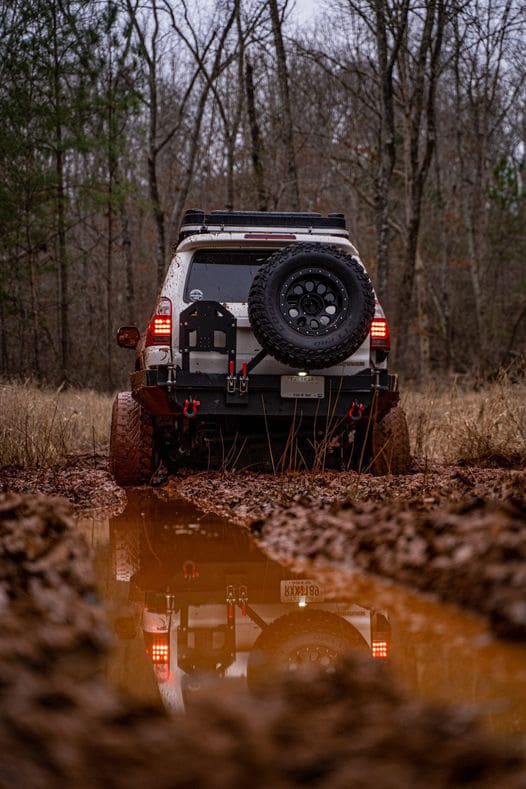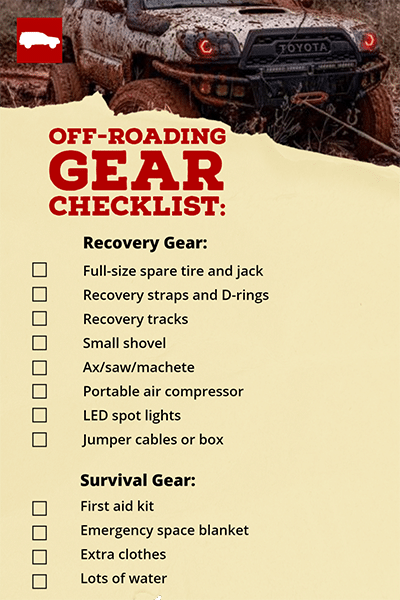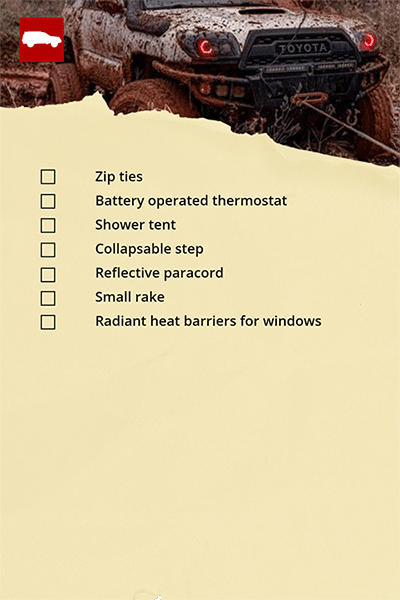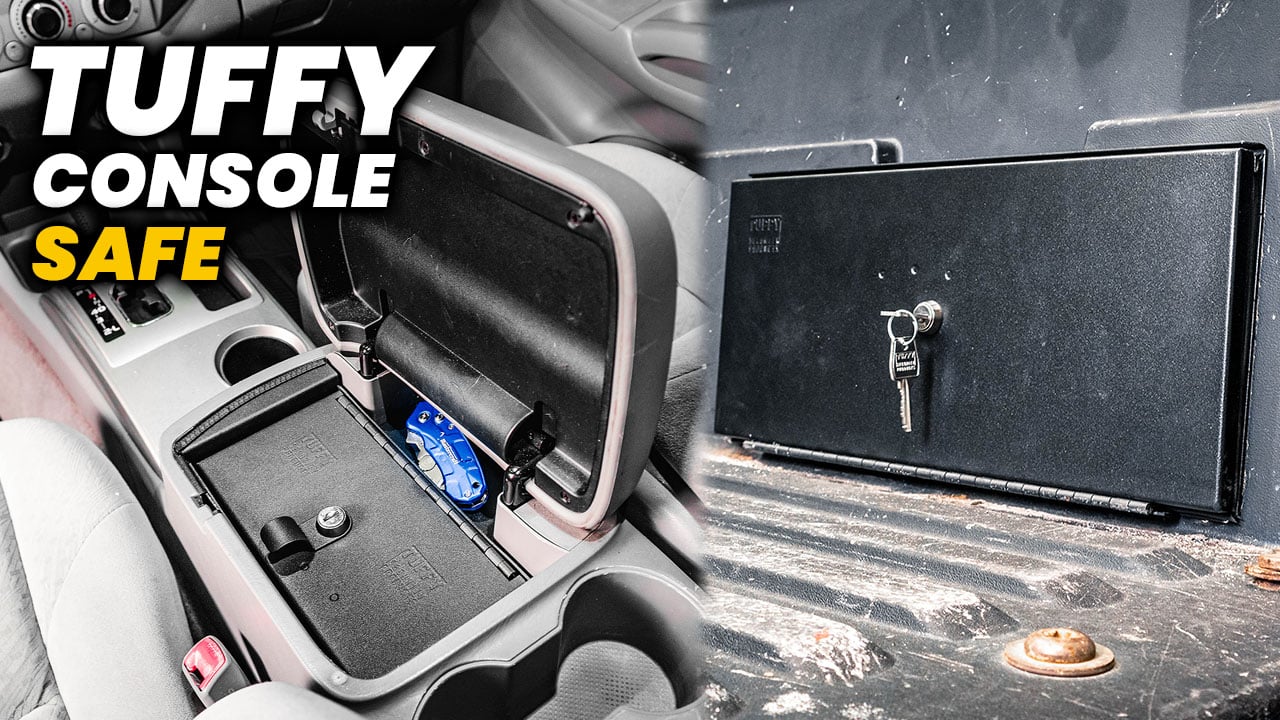If you’re planning to take your 4runner off-roading, it’s important to go prepared. Heading out to a remote area shouldn’t begin with an impulsive left turn off the highway. A good adventure starts long before that, and today, we’re going to run through some of the planning and packing you should do before you leave.
Now to be clear, not every item in this article is an absolute necessity. You can feel free to pick and choose what’s important to you but hopefully, this checklist will help you to think of anything you might need on your trip.
If you haven’t already, make sure to check out the full article on taking your Toyota 4runner off-road:
What Recovery Gear Should You Bring Off-Roading?
One of the best things about owning a 4runner is its off-road capabilities. Most owners enjoy spending time outdoors, and trail riding is a great way to explore and spend time in nature. No matter if you’re new to off-roading or have years of experience, some essential gear is needed to keep you on the trail. No one wants to spend a day stuck in the mud, sand, or snow!
Here are a few basic things to keep you rolling: always have a full-size spare tire on hand and a proper jack.
Recovery straps (bring an extra in case one breaks) and have ways to attach it to your 4runner, like a receiver shackle or D-rings (maybe pack a few extra D-rings in case one gets lost). You may want to attach your straps before you start your ride. This will save time if you get stuck.
To avoid damage to your truck, DON’T attach recovery straps to the tie-down points that are only meant for towing (see owner’s manual for their location).

If you have a heavy-duty bumper, a winch like this Warn VR Evo-10 is a great investment especially if you plan on doing serious or frequent off-roading. Warn has been a leader in the industry for many years and this winch has a lot of great reviews on 4wheelparts.
Recovery tracks like these can help in all conditions, including snow, sand, and mud. They can also be used as a shovel. Speaking of which, a small, spare shovel can also come in very handy.
An ax, saw, machete, or chainsaw is useful if you get tangled up in loose branches on the trail, or for removing fallen trees that block your path.
A portable air compressor can come in handy for airing up tires or running air tools.
If you’re out wheeling after dark, led spot lights and bars on your rig will make your recovery easier.
Jumper cables and/or a jump box are great because a dead battery can ruin an afternoon of fun. This booster from NOCO is the #1 Top Seller on Amazon right now.
Always remember any recovery gear you bring MUST be properly secured to avoid injury. The last thing you want is a bunch of stuff flying around loose inside your truck. This will protect you from injury and the inside of your ride. There are lots of storage solutions to keep your gear handy and secure.
Essential Survival Tools For Your 4runner
Before you take your 4runner out wheeling or exploring, it’s important to take into consideration a few important things. What kind of weather conditions will you be in? Will you be alone or with a buddy? How long will you be out in the elements? Will you have cell service, be close to food, gas, supplies? It’s a good idea to be prepared for unforeseen weather or emergency situations.
You have the basics: a proper jack, full-size spare, recovery straps and attachment points, jumper cables or jump pack, portable air, spare gas can, basic tools (metric for your 4runner), a roll of electrical and duct tape, shovel, small ax, road flares or markers, a reflective vest (you need to be seen if you end up out on a dark road changing a flat tire).
Now let’s pack some essential survival tools. This list of gear will depend on where our travels and or adventure takes us.




Before you venture out, think carefully about these key things: location, terrain, and weather conditions. Make sure to let someone know your location and both departure and return time. Take a list of meds, allergies, and emergency contacts.
No one wants to be stranded in the middle of nowhere, stuck in inclement weather, stranded on a highway in the middle of winter, or out in the dark in the desert or forest. Unfortunately, things can happen fast and can happen to anyone.
No matter where you travel there are some basic essentials for every trip. These would include: an emergency first aid kit, emergency space blanket(s), extra clothes, plenty of water, and/or Powerade. No matter what condition you travel in proper hydration is important! Dehydration can lead to heatstroke, headaches, muscle cramps, and other health-related issues.
Bring a local map or atlas of the area, a GPS, or satellite communication device (remember you have may little to no cell service in some areas). A weather radio if you’ll be visiting a place with fast-changing conditions. A flashlight or headlamp with extra batteries. USB power pack to keep your phone/devices charged. Bring extra cash.
Bring proper snacks – trail mix is easy to make, energy or granola bars are good. Nothing perishable unless you have a cooler or 12v fridge. If you bring a few canned goods make sure the cans have a pull top. It’s a lot easier than digging around for a can opener.

Having basic food on hand will keep you energized and focused on your journey and if you end up stuck in your rig overnight you’ll have food on hand. No one wants to waste time and gas looking for food, or end up stranded without something to eat and drink.
A basic stainless steel utensil pack comes in handy. It’s easier to eat with and won’t break like plastic utensils. A small water filtration kit, a toothbrush/paste, and a small bottle of mouthwash will help keep you fresh.
Bring a roll of paper towels or TP if no rest area is close by. Don’t forget a pee jar if you get stuck overnighting in cold or rainy conditions.
Mosquito/ insect repellant, bee sting sticks, Benadryl, and allergy meds will help to avoid any itching or discomfort.
Pack a non-cotton lightweight thermal blanket. Remember if you have condensation in your truck you will wake up with damp bedding if you use cotton!
Just remember to carefully plan and study your trip/adventure BEFORE you leave. Pack accordingly – only bring what you’ll need. Any un-needed gear will only take up space and get in the way.
Remember to pack safely. There are a ton of waterproof boxes in all sizes that will work great for stowing away recovery gear, clothing, bedding, food, etc.

Camping Products You Might Not Think Of
No matter if you’re out off-roading, traveling or truck camping, here’s some camping gear you may want to bring along with you on your next adventure.
A quick-drying microfiber towel (there’s nothing worse than drying off with a wet/musty towel, yuck)! These towels dry fast and pack down small.
An Inflatable pillow – no one wants to wake up with a stiff, sore neck. A 12v electric blanket is a better (and safer) idea than heating with a gas/propane heat source.
While it may be tempting to heat your rig with a camp stove, it’s best to avoid it due to fire and health hazards.
Waterproof matches or a lighter and some dryer lint in case you need to make a fire (outside your rig at a safe distance) to keep warm. Don’t forget a fire extinguisher!
KNOW how to start a fire BEFORE you go out exploring. If you use a camp stove for cooking, remember butane will NOT burn below -216.4 F (-138 C)
Dude wipes are great for multiple cleaning tasks. Spring clamps have multiple uses, from hanging wet clothes, to securing tarps or black-out curtains.
Blackout curtains are great if you sleep in your rig. They give you lots of privacy and can help keep drafts out. While not in use you can cover your gear for security.
A wind deflector for a camp stove. Not every day is going to be perfect – a slight breeze can make lighting your stove a real challenge.
A whistle is a great tool to have on a hike in case you need to call for help.
A bear can for food storage – nothing will ruin a trip faster than a hungry bear. A bear can will keep both you and your food safe. Bear spray is also a must while hiking or camping in bear country!
Luggage locks for your backpack will help keep your belongings safe and secure. A quick tip: buy settable combination locks and use the same code on all locks. So much easier than hunting for keys!
A waterproof backpack cover because even a sunny, cloudless afternoon can suddenly turn into a torrential rainstorm.
Headphones, because no one like to listen to other campers’ poor taste in music. A sleep mask helps if you’re in a campground with “glampers” and their “cute” LED lights.
A Scrubba wash bag is great for keeping clothes clean and can also be used to store wet, dirty clothes for the trip home.
A journal is a great way to document your trip and will give you something to do inside if the weather turns bad.

A pack of playing cards – great for a rainy day! Chapstick is handy in both cold and hot weather.
Extra stakes for tarps and tents. A stake tool – you can find multiple uses for this!
Mister Scraper (Nylon pan scraper) makes cleaning cookware a breeze and saves time scrubbing and cleaning messy pots and pans.
An extension cord with a surge protector and an adapter for the electric box (for campgrounds).
An AC port (you can install this yourself). Nothing ruins a trip faster than a nest of ants marching up your electric cord into your rig! By installing an AC port you have a secure plug-in without making a direct route into your rig for ants and other unwanted insects.
A patch kit for inflatable beds and zip ties in multiple sizes.
A battery-operated thermostat. Mount this inside your rig to monitor inside temps.
A shower tent serves as a changing tent, and toilet. It can also store things during a rainstorm
A collapsable step has multiple uses including a footrest or seat.
Reflective paracord for tarps, clothes lines, and tents (no one likes tripping over tie-outs in the dark)!
A small rake to clean your campsite.
Radiant heat barriers for windows (you can easily make your own out of Reflectix) can help lower the overall heat inside your rig and give you shade if you’re stuck in direct sun.
A good pair of gloves will protect your hands from sunburn and scrapes and cuts while changing a tire or repairing your rig. 12V or USB fan to keep you cool. An extra tarp, tie-outs, and stakes can be used for instant shade.
What You Should Wear For Off-Roading
One of the most important things is clothing and footwear: some basics include a good pair of already broken-in boots or shoes, extra pair of socks, gloves, and a hat.
A good neck gaiter comes in handy in all conditions, it can protect you from the sun, dusty or smoky conditions, and help retain body heat.
Here’s a breakdown of different climates and conditions:
Cold weather:
A good pair of insulated, waterproof boots (pair of leg gaiters for deep snow or wet conditions). A pair of wool socks (no cotton)! Remember this saying “cotton kills”. When cotton gets wet it’s hard to dry and will bring your body temp down which can lead to hypothermia or worst case scenario, death.
Bring along clothes made from wool or quick-dry material. Warm gloves (don’t forget a box of hand warmers), a wool beanie, wool long sleeve base layer, snow pants, or wind-resistant pants (the base layer underneath is a plus!) Thermal vest, hardshell wind/rain resistant outer jacket with hood.
A fleece neck gaiter and pair of snow goggles can come in handy in heavy snowy conditions if you need to change a tire or repair your rig, or worst case scenario have to hike to get help.
Hot/Humid conditions:
Bring a wide-brimmed quick-dry hat with a chin tie to keep the sun off your face, the chin strap will help keep it in place during windy conditions. A long sleeve UV shirt is a must to avoid sunburned arms, quick-dry shorts, quick-dry socks.
If you’re in an area that’s prone to ticks and or chiggers, long quick-dry hiking pants with ties on the cuffs and long socks will help keep the little critters away. Sunscreen and a good pair of sunglasses.
A UV neck gaiter can help protect you from sunburn, bug bites and can help cool you down if you soak it in water.
Wet/muddy conditions:
Bring a good pair of water-resistant boots with good tread. Leg gaiters may not be a bad idea! An extra pair of clean wool or quick-dry socks, long pair of pants (non-cotton). Rain gear, poncho or hooded raincoat, gloves, baseball hat to wear under your hood, or if you don’t have a jacket with a hood a quick-dry wide-brimmed hat – this will help keep the rain off your face while outside.
Clean change of clothes if you end up getting muddy and soaking wet. Trash bag for wet muddy boots/clothes. Extra zip lock bags to keep maps, phones, and other gear dry.
Most importantly: bring a positive attitude, even if the unexpected happens, and have fun!

Tim is the creator of Canadian Gearhead. His experience with auto detailing and working for Toyota shows through all of the articles posted here. He runs the Canadian Gearhead site and YouTube channel full-time now and currently owns a 2007 4runner, 2006 Tacoma, and 1991 MR2. Read more about Tim:





Leave a Reply